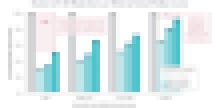No one knows how much—or how little—students have been learning as U.S. families began “sheltering in place” in March. But data is starting to emerge showing that students in families with low median annual income are taking a bigger hit than others.
Curriculum Associates’ i-Ready software is used by more than 8 million students in grades K-8 across the U.S. When COVID-19 struck, the company gave another 2 million students access to its software. But company leaders also wanted to get a glimpse into how usage of their software changed when students moved to studying entirely at home. Curriculum Associates shared the unpublished results with EdSurge. (Note: The company has since posted its report here.)
Researchers at Curriculum Associates started by defining a baseline of the number of minutes per week that students had used i-Ready to learn reading and math skills, from September through early March. (To get a realistic estimate, they omitted holiday weeks such as Thanksgiving and late December.) Next, using Census data on median household income, the researchers bucketed schools into four annual household income brackets, ranging from below $50,000 to above $100,000.
Then they looked at how usage began changing after March 15.
Not surprisingly, usage of i-Ready dropped significantly during the first week of closure, which for many schools coincided with spring break. Since then, students have been getting back into gear.

More troubling is the usage based on income levels. By the third week of school closures, 93 percent of students in the highest income bracket were back to normal usage. By contrast, only half the students in the lowest bracket were using i-Ready as regularly as they had been prior to closures.

Then came the most telling observation: Of all students using i-Ready, those in lower income levels were turning to i-Ready the most.
For instance, before school closures, students in schools with a median annual income below $50,000 were already top i-Ready users, spending an average of 41 minutes a week with the software. By the third week of closure, their usage increased to 51 minutes a week, the most of any of the four groups.
Students at schools in the highest income brackets beefed up their usage, too, upping their time on i-Ready from 31 minutes a week to 47 minutes. Although that increase represented the biggest percent gain in usage, low-income students nonetheless logged the most time on i-Ready.

“The data is showing that when students have access to the tools, they’re eager to learn,” notes Kate Geusic, vice president of strategy at Curriculum Associates. Why do lower income students use the tools the most? They may be the most motivated learners, she says, or they may not have access to many other resources.
Moving students to studying at home is throwing into stark contrast the differences confronted by learners at different income levels, adds Woody Paik, executive vice president at Curriculum Associates. “It’s bittersweet: the kids most likely to be subject to inequities are really trying to dig in and learn.”
And are they learning? Company executives say in “classic” circumstances, students who use i-Ready at recommended levels typically see “higher than average growth.” But these circumstances are anything but normal. Like many software tools, i-Ready was not designed to be used entirely on its own, Paik says. “It’s intended to make teachers more effective, to be used in conjunction with a core text, in a classroom,” observes Paik.
That means the company will likely have to wait until the autumn, and for students to take typical annual assessments, to judge how the students—and the tools—performed on their own.


